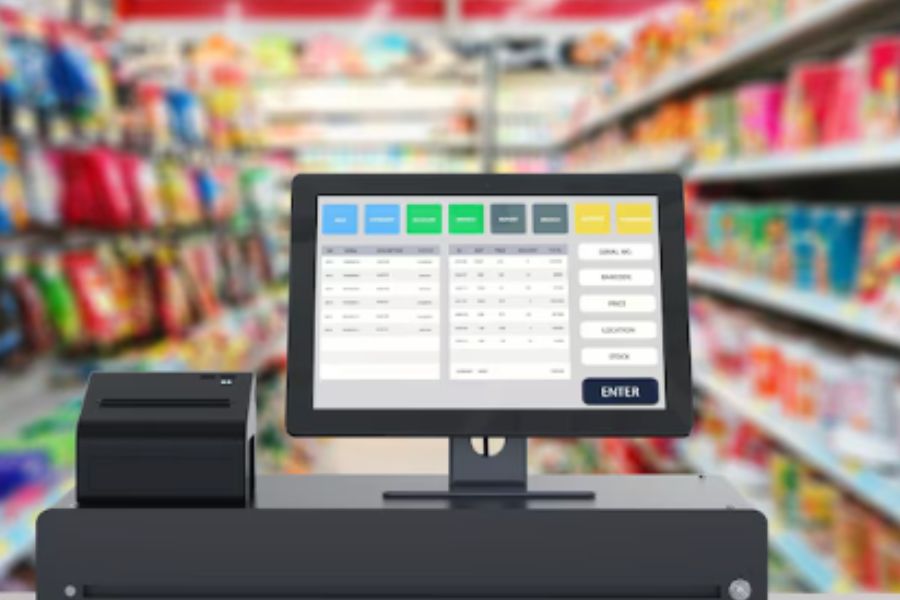Retail is one of the most vital industries that employ millions of workers and generate trillions of dollars annually in sales revenue. For that reason, a business must constantly analyze what would help them grow. Store owners must keep an eye on all the business metrics to enhance their performance, especially if operating with a Point of Sale (POS) system. Below, you’ll find some of the key business metrics that will define the profitability of a retail business.
Financial metrics
Cost Of Goods Sold (COSG)
COGS is a term used to describe the cost of doing business or in other words, the cost required to produce each item in your store. The COGS number will change over time, and there’ll be a complete difference between COGS for a working shift and COGS for an entire year.
Gross Profit
Gross profit shows the profit a business generates after accounting for its COGS. The number will indicate whether or not you’re actually putting money in your pocket. Making more sales is good, but eventually, you need to make money out of those sales.
Break-Even Point
This is a must-have metric if you are running a business. The number will tell you how much you must make in sales to earn back an initial investment. You can also use break-even analysis to justify purchases like store fixtures or checkout counter desk.
Performance metrics
Sales per square foot
This performance metric refers to the amount of sales you generate per square footage of sales space in your store. This is a good indicator of store productivity since it tells you how good you are taking advantage of space and fixtures within your shop. You can use this metric when planning your store and merchandise. Several stores will publicize this performance metric, which means it will help you know how your business is doing compared to others.
Loyalty program concept. People getting gifts and rewards from store, bonus points, discount. Flat vector illustration for promotion, commerce, sale, marketing topics
Sell-through rate
Sell-though is the percentage of units sold versus the number of units that are available to sell. This is a great performance metric to evaluate store performance. It also helps you figure out how fast a product is selling so you can make the right decisions. A high sell-through rate may indicate that you need to stock up on products. On the other hand, a slow rate means the product isn’t being sold fast enough and needs to be figured out why.
Revenue metrics
Conversion rate
This measure is the amount of store footfall to the number of consumers that complete a purchase. Your conversion rate can tell how good you are at turning watchers into buyers. Driving more visits is great, but it won’t add much to your profit if your visitors don’t convert. So make sure to be aware of this revenue metric.
Sales per employee
Sales per employee is a useful measure when planning your staff’s schedules and initiatives. This metric can help you make smarter employment decisions, particularly when it comes to employing, rostering, and compensation. The best way to do this is through a POS system because it helps you keep track of how much sales each employee is making. With that data, you can come up with suitable sales targets for your staff members.
Year over year growth
Constant improvement is a goal every retailer wants to achieve, and the best way to track your progress is to compare your current results against those of the previous period. This will help you track how your business is doing so you can respond accordingly.
Operational metrics
Inventory turnover rate
This operational metric measures the rate at which a certain product is sold. It is most useful for identifying ideal inventory levels. Being short-stocked or overstocked can damage your operation, so make sure to keep track of it.
Shoppers to retail staff ratio
No business owner would want their staff to be overwhelmed during busy hours. In parallel, having too many staff members isn’t reasonable since there isn’t much work for them. To solve this dilemma, you need to analyze the Shoppers to retail staff ratio. It keeps a content staff, while also optimizing your labor costs.
The ratio can also be paired with your conversion rate metric to determine a period in which you might be under or over-staffed. It ultimately gives you a detailed perspective on what business operations are generating more traffic.
To wrap up
To have an insightful look at these business metrics, you need to calculate and record them on a weekly or monthly basis. Then you can compare your current performance to any previous data to determine problems and opportunities. Most POS systems have these business metrics calculated for you automatically, which saves you from a lot of headaches. Choose the right one and be prepared for all the fun ahead! ConnectPOS is what you need for the success of your business. Our cloud POS system offers more than 20 comprehensive reports for shop owners to optimize their performance and overall, skyrocket sales. Get in touch with us for more information!



